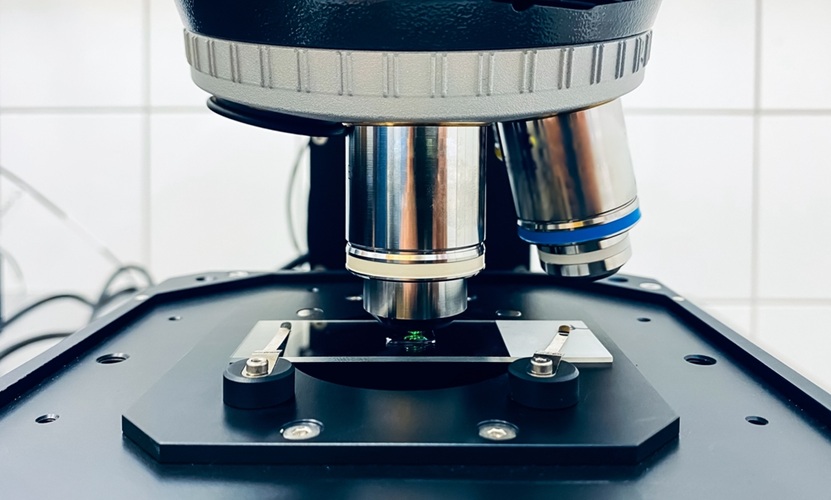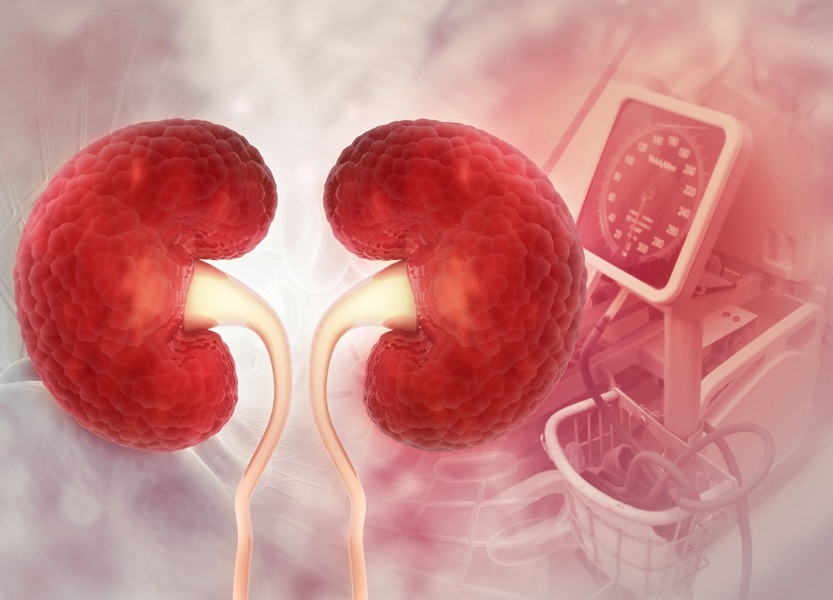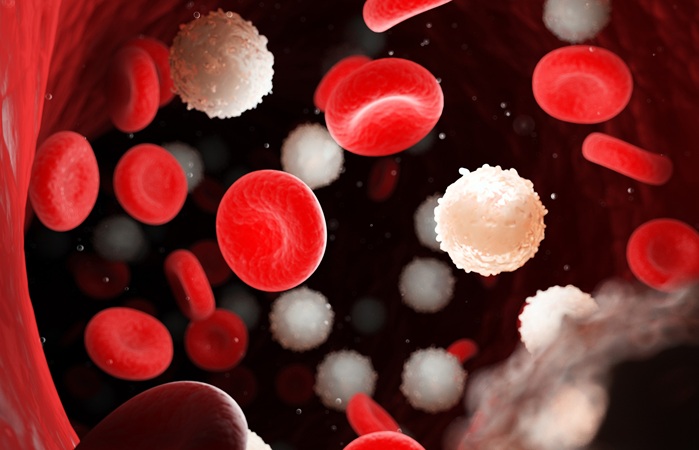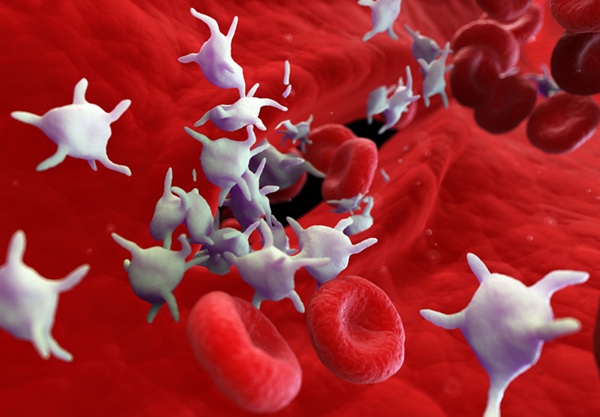Prostate Cancer Risk Test Based on Urine-Derived EV-RNA
|
By LabMedica International staff writers Posted on 08 Jul 2019 |
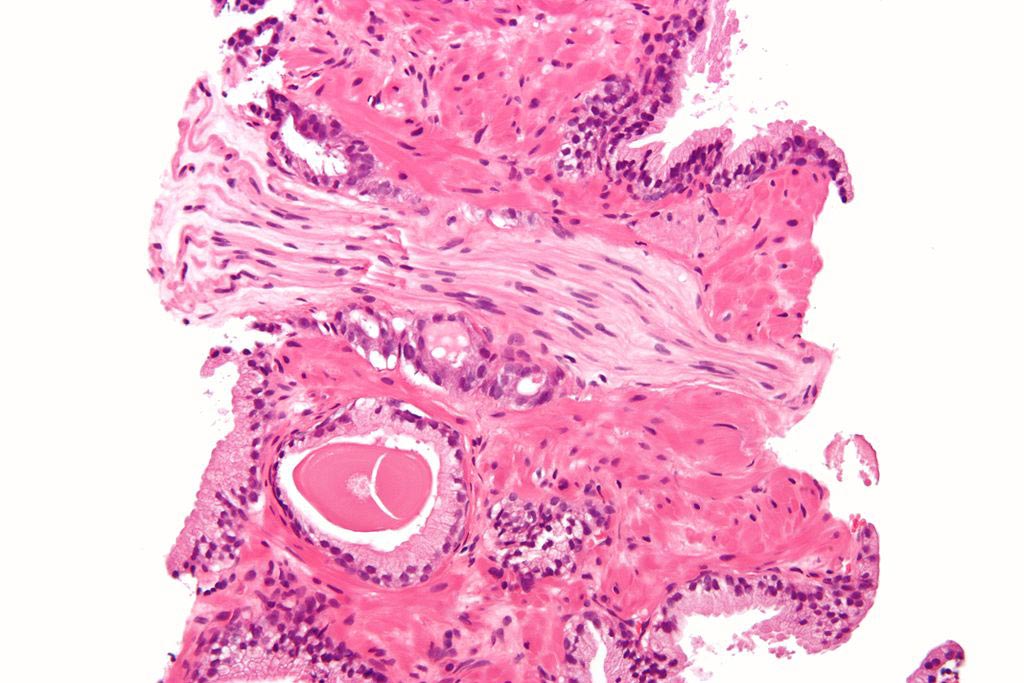
Image: A micrograph showing a prostate cancer (conventional adenocarcinoma) with perineural invasion (Photo courtesy of Wikimedia Commons).
A team of British researchers developed a prostate cancer risk classifier using urine-derived extracellular vesicle (EV)-RNA capable of providing diagnostic information on disease status prior to biopsy, and prognostic information for men on active surveillance.
Currently diagnostic tests for prostate cancer are not sufficiently specific to be able to differentiate those without prostate cancer, those with low risk disease that is unlikely to be of clinical significance, and those with disease that should be treated. To rectify this situation, investigators at the University of East Anglia's Norwich Medical School (Norwich, United Kingdom) developed a diagnostic classification system based on RNA profiles found in extracellular vesicles (EVs) in urine.
These are cell-derived vesicles that are present in many and perhaps all biological fluids, including blood, urine, and cultured medium of cell cultures. The vesicles, which contain RNA, proteins, lipids, and metabolites that are reflective of the cell type of origin, are either released from the cell when multivesicular bodies (MVBs) fuse with the plasma membrane, or they are released directly from the plasma membrane.
In the current study, the investigators determined post-digital rectal examination urine-derived EV-RNA expression profiles from samples provided by 535 centers.
By analyzing the cell-free expression of 167 genes in urine samples, the investigators identified a mathematical combination of 35 different genes that could be used to generate four prostate urine risk (PUR) signatures for predicting the probability of normal tissue (PUR-1), D'Amico low-risk (PUR-2), intermediate-risk (PUR-3), and high-risk (PUR-4) prostate cancer. This model was applied to a test cohort of 117 samples for diagnostic evaluation, and to an active surveillance sub-cohort of 87 samples for prognostic evaluation.
Results revealed that application of PUR provided a net benefit over current clinical practice, since each PUR signature was significantly associated with its corresponding clinical category. Furthermore, PUR-4 status predicted the presence of clinically significant intermediate- or high-risk disease.
Senior author Dr. Jeremy Clark, a senior research associate at Norwich Medical School, said, "This research shows that our urine test could be used to not only diagnose prostate cancer without the need for an invasive needle biopsy but to identify a patient's level of risk. This means that we could predict whether or not prostate cancer patients already on active surveillance would require treatment.
The really exciting thing is that the test predicted disease progression up to five years before it was detected by standard clinical methods. Furthermore, the test was able to identify men that were up to eight times less likely to need treatment within five years of diagnosis. If this test was to be used in the clinic, large numbers of men could avoid an unnecessary initial biopsy and the repeated, invasive follow-up of men with low-risk disease could be drastically reduced."
The Prostate Urine Risk study was published in the May 20, 2019, online edition of the journal BJU International.
Related Links:
University of East Anglia Norwich Medical School
Currently diagnostic tests for prostate cancer are not sufficiently specific to be able to differentiate those without prostate cancer, those with low risk disease that is unlikely to be of clinical significance, and those with disease that should be treated. To rectify this situation, investigators at the University of East Anglia's Norwich Medical School (Norwich, United Kingdom) developed a diagnostic classification system based on RNA profiles found in extracellular vesicles (EVs) in urine.
These are cell-derived vesicles that are present in many and perhaps all biological fluids, including blood, urine, and cultured medium of cell cultures. The vesicles, which contain RNA, proteins, lipids, and metabolites that are reflective of the cell type of origin, are either released from the cell when multivesicular bodies (MVBs) fuse with the plasma membrane, or they are released directly from the plasma membrane.
In the current study, the investigators determined post-digital rectal examination urine-derived EV-RNA expression profiles from samples provided by 535 centers.
By analyzing the cell-free expression of 167 genes in urine samples, the investigators identified a mathematical combination of 35 different genes that could be used to generate four prostate urine risk (PUR) signatures for predicting the probability of normal tissue (PUR-1), D'Amico low-risk (PUR-2), intermediate-risk (PUR-3), and high-risk (PUR-4) prostate cancer. This model was applied to a test cohort of 117 samples for diagnostic evaluation, and to an active surveillance sub-cohort of 87 samples for prognostic evaluation.
Results revealed that application of PUR provided a net benefit over current clinical practice, since each PUR signature was significantly associated with its corresponding clinical category. Furthermore, PUR-4 status predicted the presence of clinically significant intermediate- or high-risk disease.
Senior author Dr. Jeremy Clark, a senior research associate at Norwich Medical School, said, "This research shows that our urine test could be used to not only diagnose prostate cancer without the need for an invasive needle biopsy but to identify a patient's level of risk. This means that we could predict whether or not prostate cancer patients already on active surveillance would require treatment.
The really exciting thing is that the test predicted disease progression up to five years before it was detected by standard clinical methods. Furthermore, the test was able to identify men that were up to eight times less likely to need treatment within five years of diagnosis. If this test was to be used in the clinic, large numbers of men could avoid an unnecessary initial biopsy and the repeated, invasive follow-up of men with low-risk disease could be drastically reduced."
The Prostate Urine Risk study was published in the May 20, 2019, online edition of the journal BJU International.
Related Links:
University of East Anglia Norwich Medical School
Latest BioResearch News
- Genome Analysis Predicts Likelihood of Neurodisability in Oxygen-Deprived Newborns
- Gene Panel Predicts Disease Progession for Patients with B-cell Lymphoma
- New Method Simplifies Preparation of Tumor Genomic DNA Libraries
- New Tool Developed for Diagnosis of Chronic HBV Infection
- Panel of Genetic Loci Accurately Predicts Risk of Developing Gout
- Disrupted TGFB Signaling Linked to Increased Cancer-Related Bacteria
- Gene Fusion Protein Proposed as Prostate Cancer Biomarker
- NIV Test to Diagnose and Monitor Vascular Complications in Diabetes
- Semen Exosome MicroRNA Proves Biomarker for Prostate Cancer
- Genetic Loci Link Plasma Lipid Levels to CVD Risk
- Newly Identified Gene Network Aids in Early Diagnosis of Autism Spectrum Disorder
- Link Confirmed between Living in Poverty and Developing Diseases
- Genomic Study Identifies Kidney Disease Loci in Type I Diabetes Patients
- Liquid Biopsy More Effective for Analyzing Tumor Drug Resistance Mutations
- New Liquid Biopsy Assay Reveals Host-Pathogen Interactions
- Method Developed for Enriching Trophoblast Population in Samples
Channels
Clinical Chemistry
view channel
Carbon Nanotubes Help Build Highly Accurate Sensors for Continuous Health Monitoring
Current sensors can measure various health indicators, such as blood glucose levels, in the body. However, there is a need to develop more accurate and sensitive sensor materials that can detect lower... Read more
Paper-Based Device Boosts HIV Test Accuracy from Dried Blood Samples
In regions where access to clinics for routine blood tests presents financial and logistical obstacles, HIV patients are increasingly able to collect and send a drop of blood using paper-based devices... Read moreMolecular Diagnostics
view channel
Blood Test Identifies Multiple Biomarkers for Rapid Diagnosis of Spinal Cord Injury
The National Institutes of Health estimates that 18,000 individuals in the United States sustain spinal cord injuries (SCIs) annually, resulting in a staggering financial burden of over USD 9.... Read more
Highly Accurate Blood Test Diagnoses Alzheimer’s and Measures Dementia Progression
Several blood tests are currently available to assist doctors in diagnosing Alzheimer's disease in individuals experiencing cognitive symptoms. However, these tests do not provide insights into the clinical... Read more
Simple DNA PCR-Based Lab Test to Enable Personalized Treatment of Bacterial Vaginosis
Approximately one in three women aged 14-49 in the United States will experience bacterial vaginosis (BV), a vaginal bacterial imbalance, at some point in their lives. Around 50% of BV cases do not present... Read moreHematology
view channel
New Scoring System Predicts Risk of Developing Cancer from Common Blood Disorder
Clonal cytopenia of undetermined significance (CCUS) is a blood disorder commonly found in older adults, characterized by mutations in blood cells and a low blood count, but without any obvious cause or... Read more
Non-Invasive Prenatal Test for Fetal RhD Status Demonstrates 100% Accuracy
In the United States, approximately 15% of pregnant individuals are RhD-negative. However, in about 40% of these cases, the fetus is also RhD-negative, making the administration of RhoGAM unnecessary.... Read moreImmunology
view channel
Post-Treatment Blood Test Could Inform Future Cancer Therapy Decisions
In the ongoing advancement of personalized medicine, a new study has provided evidence supporting the use of a tool that detects cancer-derived molecules in the blood of lung cancer patients years after... Read more
Cerebrospinal Fluid Test Predicts Dangerous Side Effect of Cancer Treatment
In recent years, cancer immunotherapy has emerged as a promising approach where the patient's immune system is harnessed to fight cancer. One form of immunotherapy, called CAR-T-cell therapy, involves... Read more
New Test Measures Preterm Infant Immunity Using Only Two Drops of Blood
Preterm infants are particularly vulnerable due to their organs still undergoing development, which can lead to difficulties in breathing, eating, and regulating body temperature. This is especially true... Read more
Simple Blood Test Could Help Choose Better Treatments for Patients with Recurrent Endometrial Cancer
Endometrial cancer, which develops in the lining of the uterus, is the most prevalent gynecologic cancer in the United States, affecting over 66,000 women annually. Projections indicate that in 2025, around... Read moreMicrobiology
view channel
Breakthrough Diagnostic Technology Identifies Bacterial Infections with Almost 100% Accuracy within Three Hours
Rapid and precise identification of pathogenic microbes in patient samples is essential for the effective treatment of acute infectious diseases, such as sepsis. The fluorescence in situ hybridization... Read more
Innovative ID/AST System to Help Diagnose Infectious Diseases and Combat AMR
Each year, 11 million people across the world die of sepsis out of which 1.3 million deaths are due to antibiotic-resistant bacteria. The burden of antimicrobial resistance (AMR) continues to weigh heavily,... Read more
Gastrointestinal Panel Delivers Rapid Detection of Five Common Bacterial Pathogens for Outpatient Use
Acute infectious gastroenteritis results in approximately 179 million cases each year in the United States, leading to a significant number of outpatient visits and hospitalizations. To address this, a... Read morePathology
view channel
AI Model Predicts Patient Response to Bladder Cancer Treatment
Each year in the United States, around 81,000 new cases of bladder cancer are diagnosed, leading to approximately 17,000 deaths annually. Muscle-invasive bladder cancer (MIBC) is a severe form of bladder... Read more
New Laser-Based Method to Accelerate Cancer Diagnosis
Researchers have developed a method to improve cancer diagnostics and other diseases. Collagen, a key structural protein, plays various roles in cell activity. A novel multidisciplinary study published... Read more
New AI Model Predicts Gene Variants’ Effects on Specific Diseases
In recent years, artificial intelligence (AI) has greatly enhanced our ability to identify a vast number of genetic variants in increasingly larger populations. However, up to half of these variants are... Read more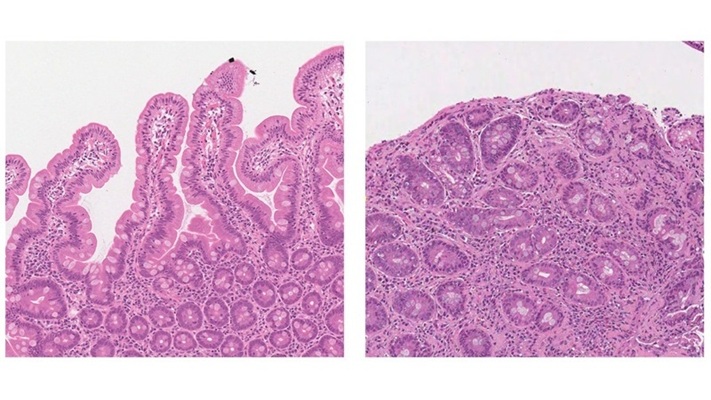
Powerful AI Tool Diagnoses Coeliac Disease from Biopsy Images with Over 97% Accuracy
Coeliac disease is an autoimmune disorder triggered by the consumption of gluten, causing symptoms such as stomach cramps, diarrhea, skin rashes, weight loss, fatigue, and anemia. Due to the wide variation... Read moreTechnology
view channel
Smartphones Could Diagnose Diseases Using Infrared Scans
Rapid advancements in technology may soon make it possible for individuals to bypass invasive medical procedures by simply uploading a screenshot of their lab results from their phone directly to their doctor.... Read more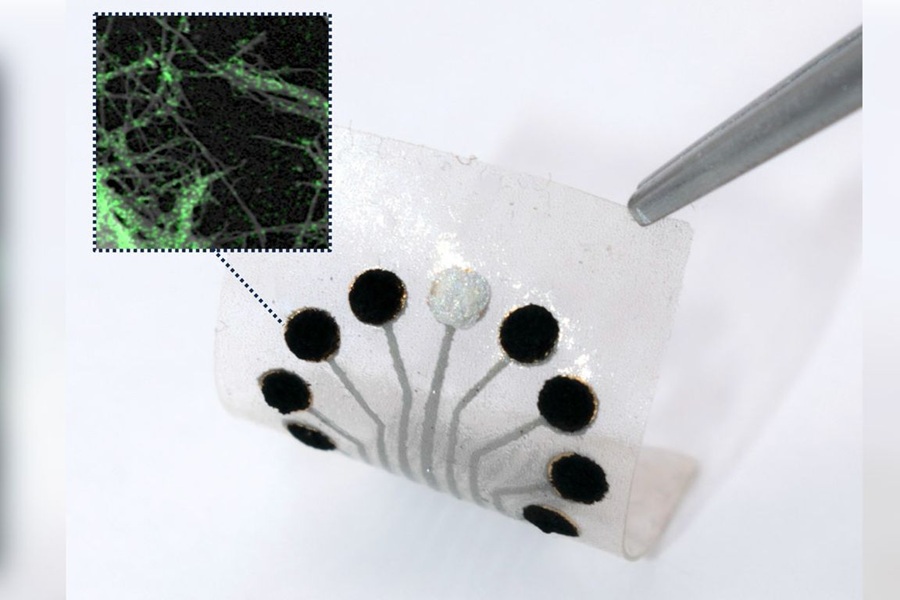
Novel Sensor Technology to Enable Early Diagnoses of Metabolic and Cardiovascular Disorders
Metabolites are critical compounds that fuel life's essential functions, playing a key role in producing energy, regulating cellular activities, and maintaining the balance of bodily systems.... Read more
3D Printing Breakthrough Enables Large Scale Development of Tiny Microfluidic Devices
Microfluidic devices are diagnostic systems capable of analyzing small volumes of materials with precision and speed. These devices are used in a variety of applications, including cancer cell analysis,... Read moreIndustry
view channelLeica Biosystems and Bio-Techne Expand Spatial Multiomic Collaboration
Bio-Techne Corporation (Minneapolis, MN, USA) has expanded the longstanding partnership between its spatial biology brand, Advanced Cell Diagnostics (ACD, Newark, CA, USA), and Leica Biosystems (Nussloch,... Read more
Philips and Ibex Expand Partnership to Enhance AI-Enabled Pathology Workflows
Royal Philips (Amsterdam, The Netherlands) has expanded its partnership with Ibex Medical Analytics (Tel Aviv, Israel) and released the new Philips IntelliSite Pathology Solution (PIPS) to further accelerate... Read more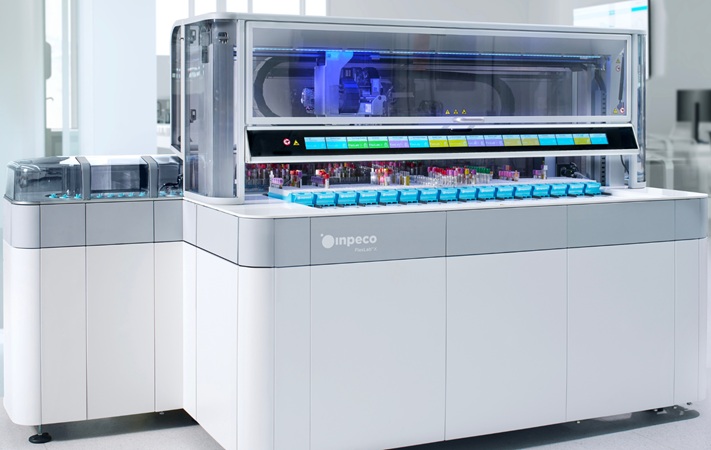
Grifols and Inpeco Partner to Deliver Transfusion Medicine ‘Lab of The Future’
Grifols (Barcelona, Spain), a manufacturer of plasma-derived medicines and innovative diagnostic solutions, has entered into a strategic agreement with Inpeco (Novazzano, Switzerland), a global leader... Read more











